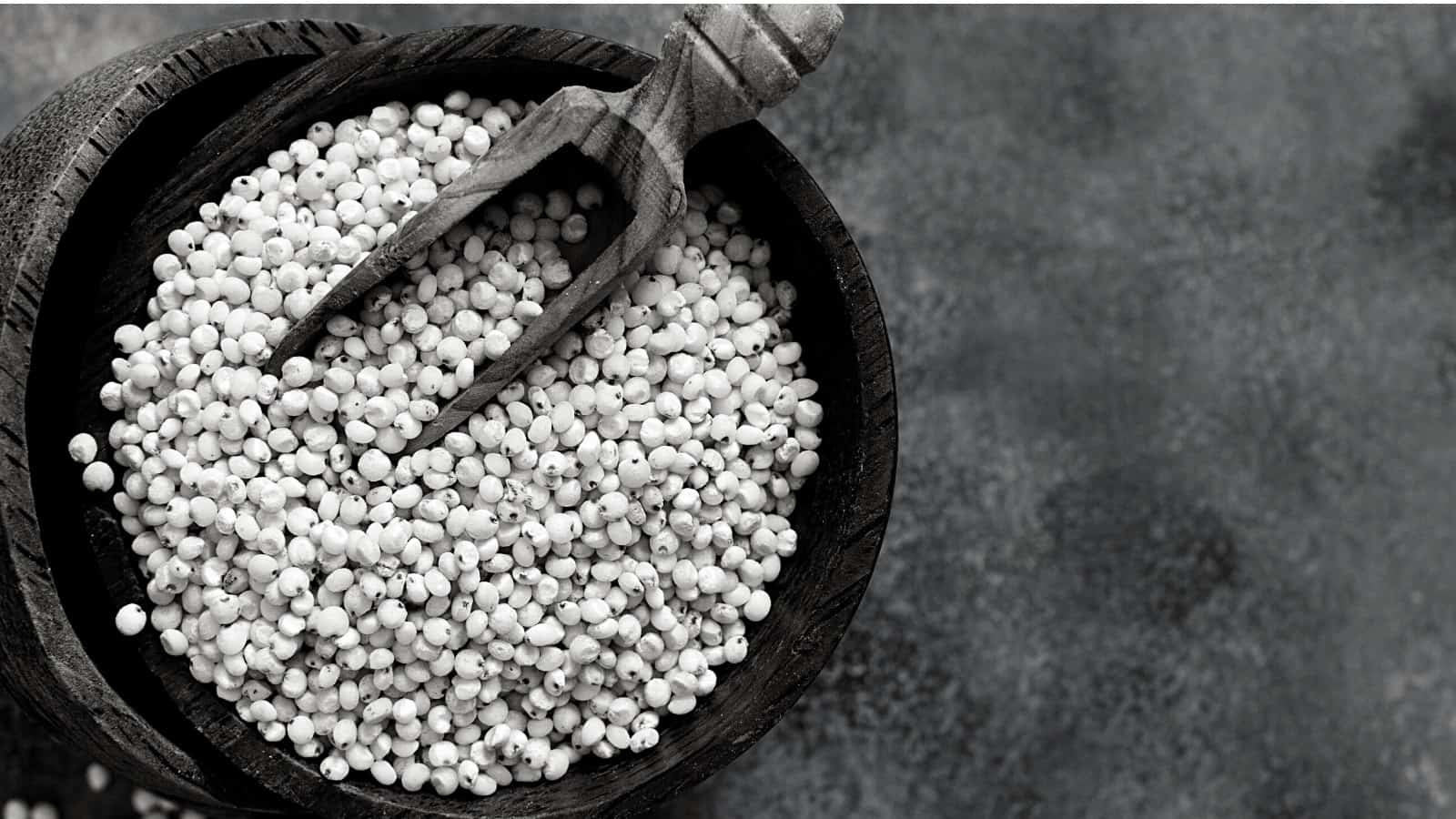Are you searching for natural food that is healthy, versatile, and flavorful? Then you’re bound to love sorghum.
Not only is this ancient grain loaded with nutrients and fiber, but it’s also gluten-free.
Perhaps your only familiarity with this grain by seeing it as a bottled syrup in the grocery store. This tasty and nutritious syrup comes from grass that’s related to bamboo, fescue, and lemongrass.
Since this grain tolerates long seasons of drought, it’s often cultivated in arid climates that get minimal rainfall. Much of the world’s supply comes from African nations, where it’s a staple crop. It’s also a significant export harvest for warmer regions of the United States.
Historical Attributes
 This grain has a history that goes back at least 8,000 years BCE in Ancient Egypt, says an article published by the Kansas Farm Food Connection. Over the centuries, its cultivation spread across the world, including North America. In fact, states the article, Benjamin Franklin may have been the first to write about using the grassy plant for making brooms in the colonies.
This grain has a history that goes back at least 8,000 years BCE in Ancient Egypt, says an article published by the Kansas Farm Food Connection. Over the centuries, its cultivation spread across the world, including North America. In fact, states the article, Benjamin Franklin may have been the first to write about using the grassy plant for making brooms in the colonies.
The article also mentions that Kansas is the leading grower of this grain. Not only is the grain and its products used for human food, but it’s also used to feed farm animals and for producing ethanol.
Do you live in a warm climate and have moderate sandy soil? You can grow this lovely grain as quickly as you can, corn or wheat. It’s an annual that starts from a seed, and you can raise as much or as little as you like.
In syrup form, it creates a dark, thick, sweet nectar that’s similar to molasses. However, these syrups have different taste profiles and derive from different plants. Molasses is processed from the sweet juices of sugar cane plants, and the other comes from grain.
Preparing the Various Types of Sorghum
This healthy plant can be prepared in many ways, not just as the perennial syrup in the baking aisle. Did you know different cultivars have grain in four different colors? You can find the grain in yellow, white, red, or black.
It’s a versatile grain that can be enjoyed whole or ground into flour or thick, sweet syrup. Either way, you can incorporate a form of the grain into some yummy and nutritious recipes. It’s the perfect complement for savory or sweet dishes.
You’ll also be glad to know that preparing this hearty grain is just as simple as making rice or any other of your favorite morsels. If you buy the whole grain or rounded variety, also called pearl, you have many preparation options. You can make it on your stove, in a pressure cooker, slow cooker, or even your rice steamer.
Feel free to use this satisfying verdant in any of your whole-grain dishes. It has a subtle fragrance and a pleasant al dente texture. Its flavor is light and neutral, and it’s ideal for mixing into a fresh salad, soup, casserole, or a stand-alone side dish. You can even pop it on the stove like miniature popcorn.
You can also enjoy this plant in its processed forms, such as syrup and whole-grain flour. Many gluten-free mixtures in the store contain flour made from this grain. It makes mouthwatering gluten-free goodies like cookies, bread, and muffins. Just remember to enjoy them in moderation.
Nine Health Benefits of Consuming Sorghum
A publication from the Whole Grains Council recommends that you have at least three servings of whole grains each day, totaling about 48 grams. In addition to being tasty and inexpensive, sorghum provides this recommendation and beyond. Here are nine health benefits for you to consider.
1. Provides Plenty of Antioxidants
A study published by Phytochemistry found that this grain is a significant source of antioxidants. These naturally occurring phytochemicals protect your body’s cells from the damage of free radicals. In doing such, says the study, it’s possible to reduce your chances of developing common diseases.
The study also mentions that the tannin in this grassy plant may lower your chances of obesity. This may lead to better heart health. It can also make you less prone to obesity-linked diseases like diabetes, high blood pressure, and certain cancers, per the study.
2. Sorghum May Reduce Inflammation
If you have inflammation in your body, it may be a prime source of pain and certain diseases. According to an article published by the Journal of Medicinal Food, the phytochemicals found in specific cultivars have anti-inflammatory properties. It suggests that a healthy diet including this grain may help reduce inflammation and predisposition for diseases in your body.
3. Punch of Protein
Are you trying to include more healthy protein into your daily meals? Here’s a tasty grain product that may help. It’s especially beneficial for vegans or vegetarians who need high protein alternatives to meat.
Just a half-cup of this ancient food provides 11 grams of protein, says a publication from Nutrition Value. This serving would make 22 percent of your daily recommendation for protein, quotes the source. Even if you are trying to eat less meat, it’s an excellent source of plant protein.
4. Pump Up Your Iron
Your body couldn’t function without iron, an abundant mineral in many foods. It helps your blood cells transport oxygen more efficiently and boosts your immune system.
Do you want to maximize your daily iron intake? This grain is a delicious way to do it. If you have a diagnosed iron deficiency, making it part of your diet may bring your body back into balance.
 5. Full of Fiber
5. Full of Fiber
Ancient grains and cereals are some of the best sources of fiber you can eat. Fiber provides the bulk material that moves nutrients through your digestive tract. A table published by the USDA states that a half cup of this grain provides 6.7 grams of beneficial fiber.
6. Good for Your Heart
Your heart needs several vitamins and minerals to stay healthy, and this grain can provide them. Some of these heart-healthy substances include potassium, magnesium, and fiber. These nutrients may help lower your blood pressure and cholesterol, which in turn can reduce your risks of cardiac problems.
7. May Stabilize Glucose Levels
Not only does this grain’s high fiber content benefit your digestive system, but it can also help you manage your blood glucose levels. The fiber acts as a filter and keeps ingested glucose from entering your bloodstream at once. With this gradual entrance, your blood glucose level can be steady instead of spiking and dropping.
8. May Help Lower Cholesterol
If you have problems with high cholesterol, consider adding this grain to your diet. Its abundant fiber latches on to excess cholesterol molecules and keeps your bloodstream from absorbing them. You may see a difference the next time you have your cholesterol checked.
In addition to beneficial fiber, it contains plant sterols that may further reduce your cholesterol absorption, especially the harmful LDL type. Plant sterols are also found in other whole grains, like rye and oats. It’s a tasty way to lower your cholesterol and minimize your risks of cardiovascular disease.
9. Sorghum Is Celiac Disease-Friendly
Have you or a loved one been diagnosed with celiac disease? According to an article published by the National Institute of Diabetes, Digestion, and Kidney Diseases, people with celiac disease can’t ingest gluten because it wreaks havoc on their small intestines. If they eat anything with gluten, they battle painful bloating and diarrhea and can’t absorb vital nutrients.
Unfortunately, gluten is the main protein in whole grains like wheat and rye. So, many baked goods are off your menu if you have celiac disease. The good news is that sorghum is a whole grain that is naturally free of gluten and can be used safely in many of your favorite recipes.
Possible Risks or Side Effects of Consuming Sorghum
Most people can incorporate this delicious grain into their diet without any problems. However, you may need to keep your intake moderate if you have sensitivities to potassium-rich foods. It’s something to discuss with your medical provider or a registered dietician.
Potassium is an essential electrolyte that keeps your muscles healthy and strong. Any excess potassium you consume is usually flushed out harmlessly through your kidneys. But your kidneys may not do complete flushing if you have chronic kidney disease, so the potassium can build up to dangerous levels.
Two servings or less of this grain may keep your potassium at a safe level. However, overeating can raise your potassium levels and threaten your health. Such a condition could cause a heart attack.
 Final Thoughts about the Benefits of Eating Sorghum
Final Thoughts about the Benefits of Eating Sorghum
Sorghum and its processed products offer health benefits that are hard to ignore. Whether you have gluten intolerance or you need a boost of nutrients and fiber, this plant may be your answer. Talk to a registered dietician to discover more exciting ways you can incorporate it into your healthy diet.

















